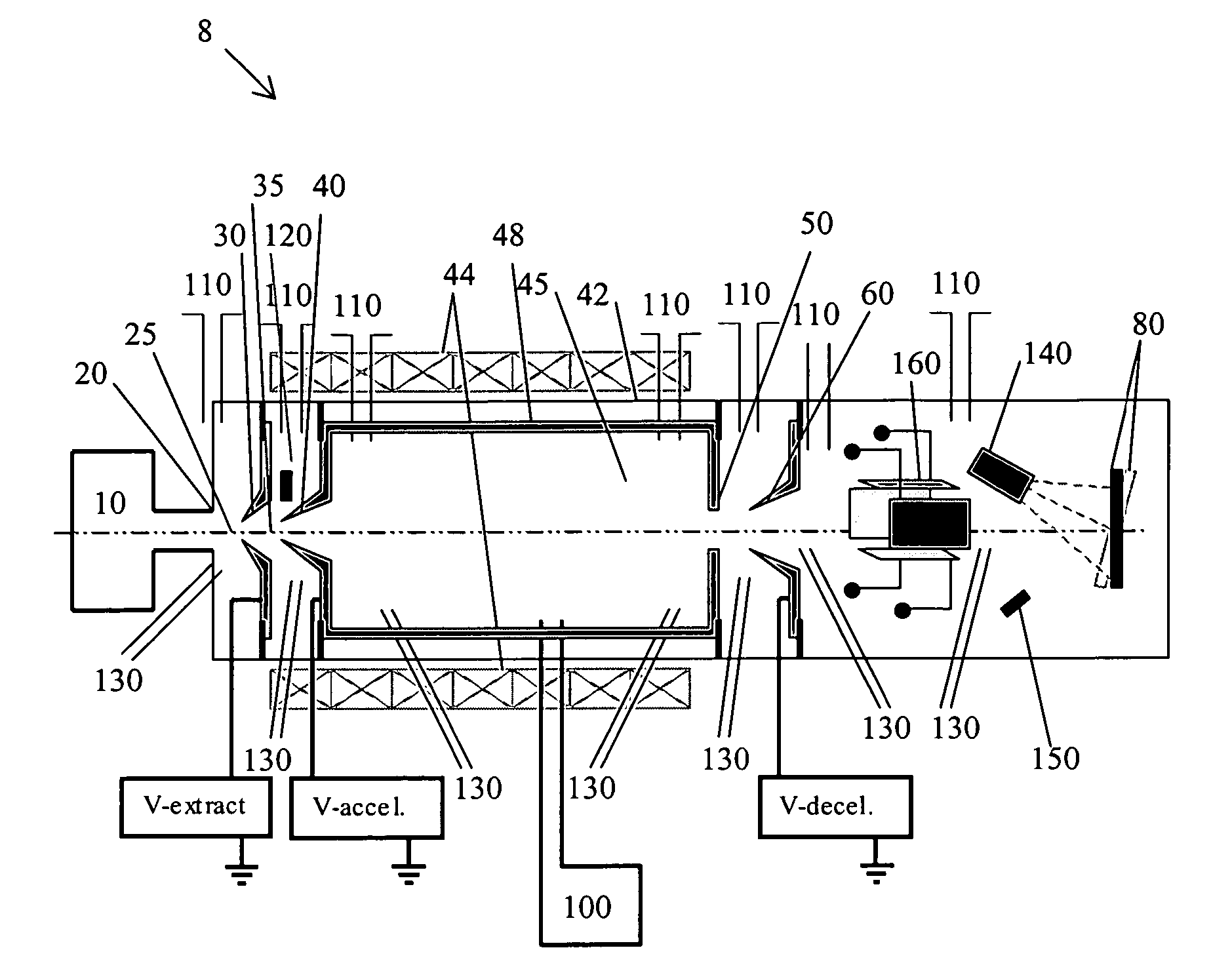Particle processing apparatus and methods
a technology of particle processing and processing apparatus, applied in the direction of instruments, mass spectrometers, beam deviation/focusing by electric/magnetic means, etc., can solve the problem of limited current methods for producing structured particles
- Summary
- Abstract
- Description
- Claims
- Application Information
AI Technical Summary
Problems solved by technology
Method used
Image
Examples
example 1
[0077] General Example Relating to Second Thermal History
[0078] The ability to control the thermal evolution of particles by rapid or gradual heating, rapid or gradual cooling, or by maintaining particles at a fixed temperature as they move through the process volume, as described above, allows the creation of a second thermal history for the particles. The fact that they are moving through vacuum or low pressure separately and do not come into contact allows for very high temperature processing without agglomeration. This can, for example, permit the selection of a state for the particles between various possible states, such as single crystal, polycrystalline, segregated amorphous, and homogenous amorphous (glassy), and the like. The ability to heat and / or control the cooling of the particles also allows for control of compositional evolution such as the evaporation of an undesired external coating or the growth or removal of an external coating through reactions of the hot partic...
example 2
[0079] Separation and Transport of Hot Particles from Process Gasses and other Products with Minimal Thermal Processing and Setting of Final Velocity
[0080] Acceleration and transport of hot particles from source to target with minimal cooling or minimal changes in internal structure or composition can be achieved by accelerating the particles to high speed upon exiting the particles source. This has two effects: 1) minimizing the transit time and thus minimizing the cooling, and absorption of contaminants, and 2) resetting the velocity of the particles to the desired value decoupled from the high velocity used during transport.
[0081] Thus, charged species are extracted from the particle source by applying an extraction potential of at least 10,000 Volts. Additional ions or electrons can optionally be added using the ion / electron source which impart additional thermal energy and / or charge in order to maintain the temperature and maximize the accelerated velocity, respectively. The ex...
example 3
[0082] Particles with Additional Thermal Processing and Time for Structural or Chemical Modification such as Thermal Annealing
[0083] Particles which receive additional thermal processing beyond that which has occurred upon extraction from the particle source can be prepared according to this example. Charged species are extracted from the particle source by applying an extraction potential of about 100 to about 10,000 Volts. Additional ions or electrons are optionally added to the species beam using the ion / electron source. The particles are either minimally accelerated or decelerated into the processing compartment by applying a potential to the acceleration electrode of between about -10,000 and about +10,000 Volt, or are allowed to enter the compartment without change in velocity. Additional heat is applied to the slow moving particles by collisions with energetic electrons or ions accelerated by ECR or ICR respectively under conditions similar to those previously described. The ...
PUM
| Property | Measurement | Unit |
|---|---|---|
| diameter | aaaaa | aaaaa |
| distance | aaaaa | aaaaa |
| charge to mass ratio | aaaaa | aaaaa |
Abstract
Description
Claims
Application Information
 Login to View More
Login to View More - R&D
- Intellectual Property
- Life Sciences
- Materials
- Tech Scout
- Unparalleled Data Quality
- Higher Quality Content
- 60% Fewer Hallucinations
Browse by: Latest US Patents, China's latest patents, Technical Efficacy Thesaurus, Application Domain, Technology Topic, Popular Technical Reports.
© 2025 PatSnap. All rights reserved.Legal|Privacy policy|Modern Slavery Act Transparency Statement|Sitemap|About US| Contact US: help@patsnap.com



